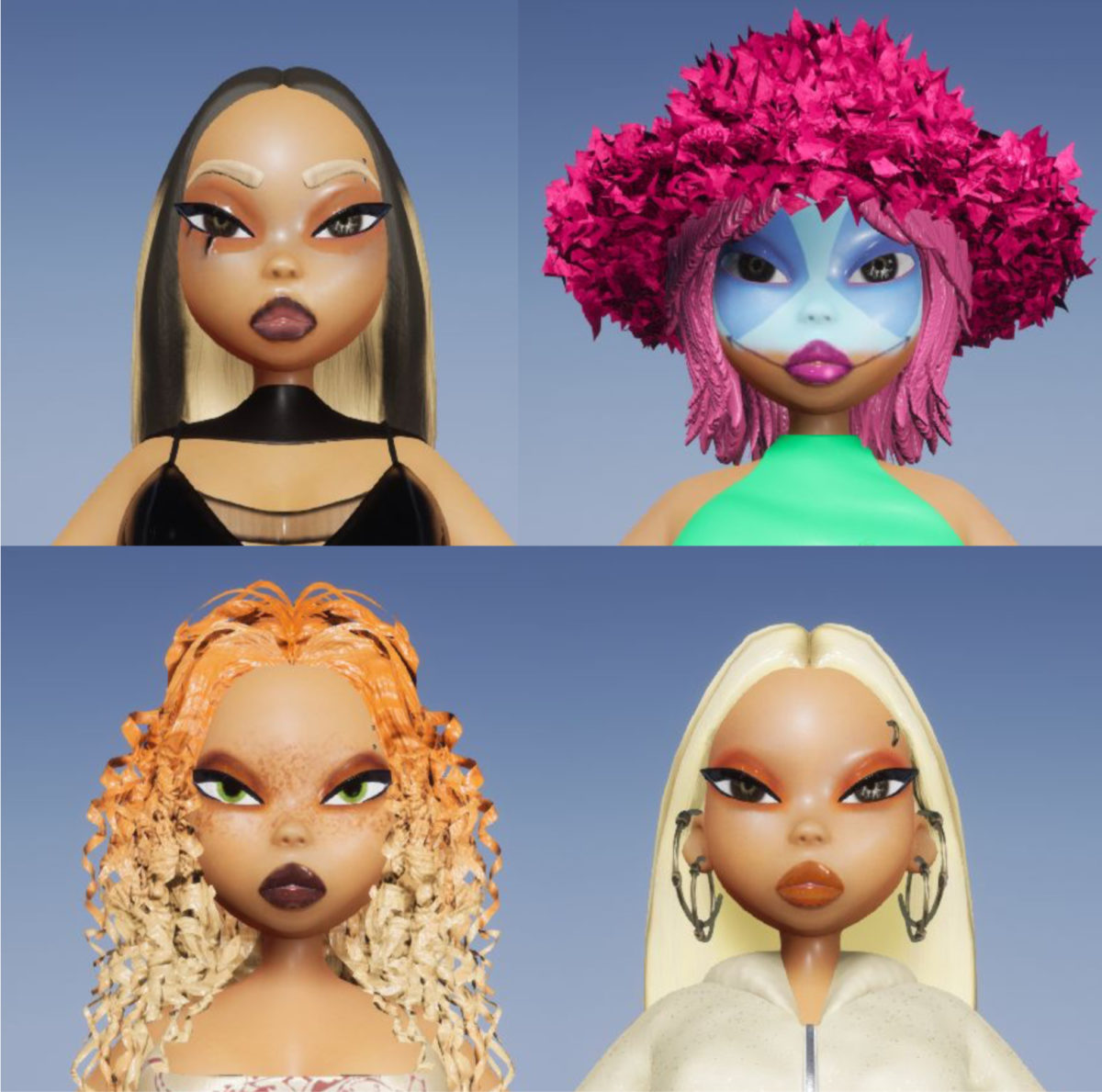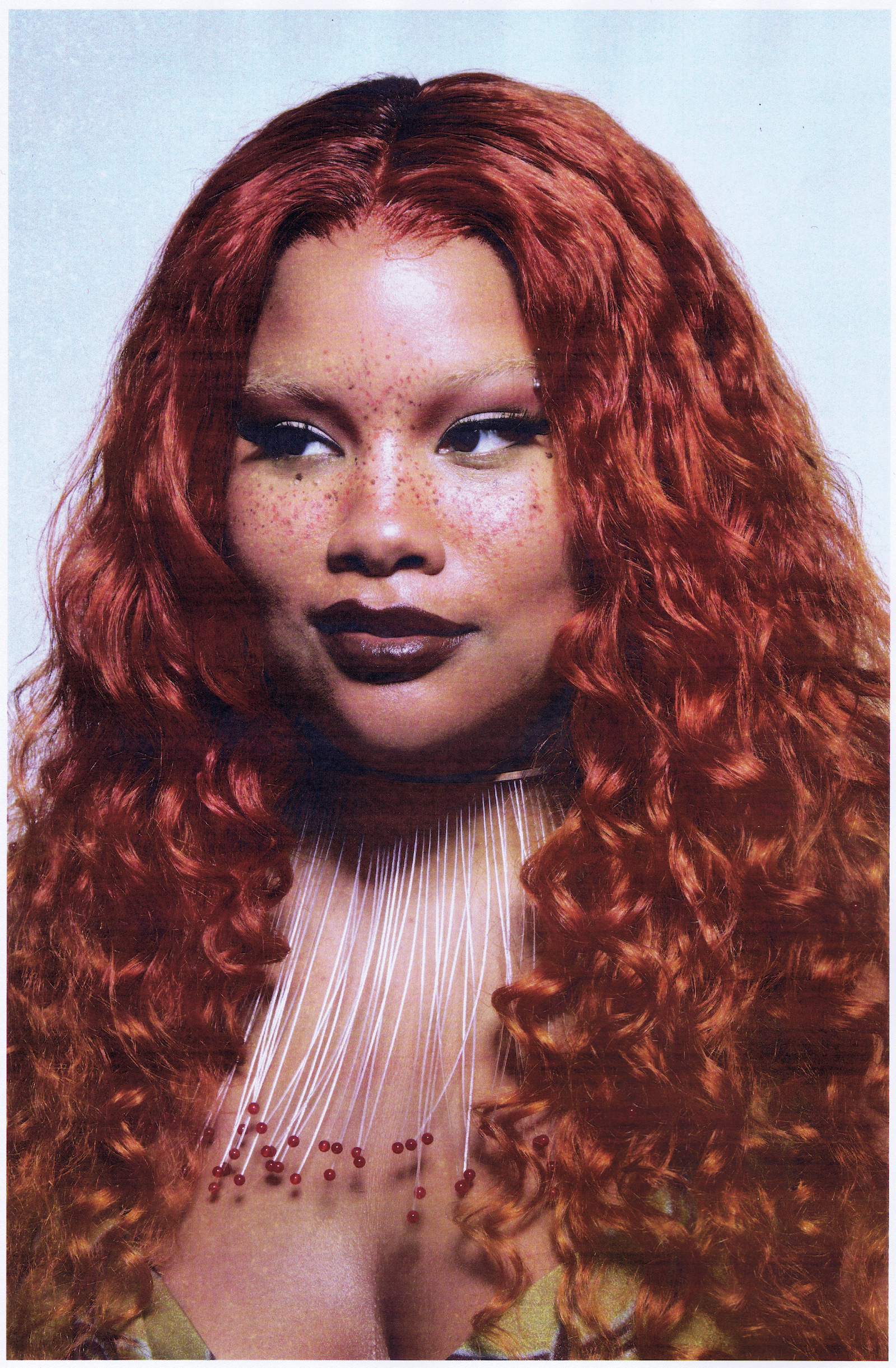
Shygirl as Bovine, 2020. Creative direction by Shygirl and Mischa Notcutt. Courtesy the artist
In her new EP, ALIAS, South London rapper Shygirl introduces the world to the bbz. These Bratz-like avatars (Baddie, Bonk, Bovine and Bae) are each intended to embody elements of the artist’s personality. They move in and out of ALIAS’ seven tracks like hyperactive, debauched pixies, absorbing and multiplying the sexual energy of Shygirl’s flows, and toxifying the beats provided by Sega Bodega, SOPHIE, Karma Kid and Happa. They are more than characters in a concept album; they represent Shygirl’s evolution into a combat-ready rapper while staying true to her dancefloor roots. Teeming with raucousness, they feature heavily in Shygirl’s music videos, and reflect her own endless morphing via costume and vocal changes under the eye of creative director Mischa Notcutt.
ALIAS opens with an anxious electronica stairway before slamming into a thick bassline on TWELVE. From there the tracks move from rave influences and jingly breaks on TASTY, to the neon plastic Europop of closing track, SIREN. Shygirl’s lyrics cut through whichever sounds they meet, exploring every possible dimension within the broad category of sex: bodies both evasive and close; lust and loss; flirting and fetish. “Why ride with the devil when I could give you hell?” she asks on TWELVE, setting the tone from the outset. These songs speak of a tantalising youth culture which pays little attention to those who view its behaviours as transgressions.
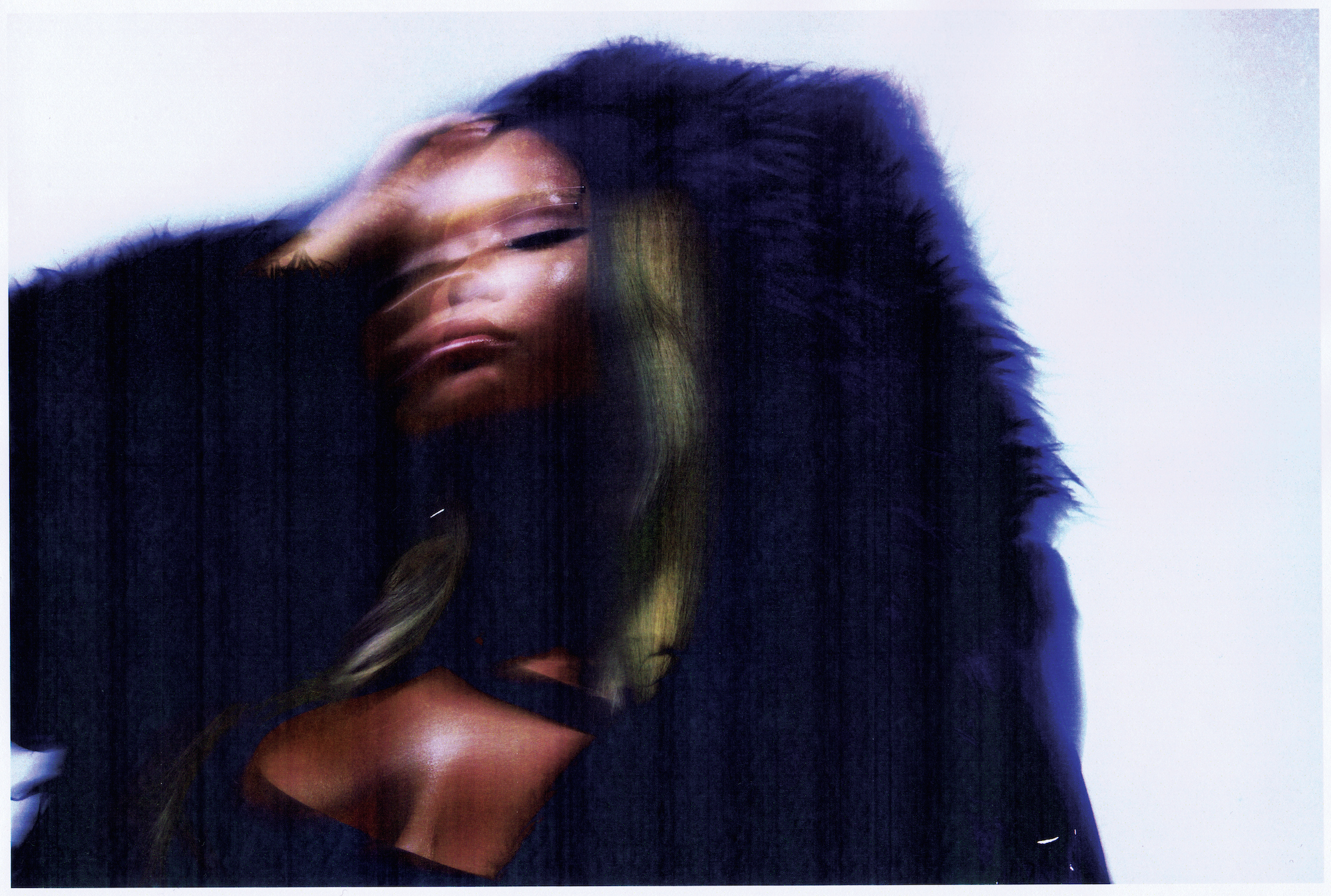
All but one of the tracks clock in at well under three minutes in length, but Shygirl manages to create a sonic narrative in each. FREAK starts with a sedated, grumbling bass amble before turning into a full-throttle rave track. The gleefully self-absorbed refrain of the first section (“I’m a freak, yeah I know / Know you like to hear me say it”) is quickly swapped for an open sexual boast (“I’m a freak in the sheets, and I go the wholе night”), as if mirroring the rising intensity of a sexual encounter. A different facet of Shygirl’s persona is represented on each song, from youth to imagined future. The bbz reflect this, and their appearance is a runway for Shygirl’s aesthetic influences.
“Shygirl’s videos depict a world of flirtation rooted firmly within modern hookup and club culture”
Shygirl’s videos also reflect the ineffability of sex, often working through allusion and allegory, while depicting a world of flirtation rooted firmly within modern hookup and club culture. The digital realm forms a significant part of this. SLIME’s lyric video splits the song’s voice into a Whatsapp-style text exchange between two speakers, though the distinction between them is at times hazy.
Here is a series of brutish sexual challenges in conversational form; the unspoken energy of the club and bedroom spelled out for curious eyes: “Tell me now if ur looking to get down,” is answered with “In the back, in the front, on the highway in ur truck,” while semi-nude images dance beneath the screen. By recasting the language of hookups as one of lyrical possibility, Shygirl draws attention to her own skill as a writer while paying homage to that back and forth between partners. The final frames return to a common code: a purple devil emoji and an incoming call from an unknown number.
The video for FREAK sits at the opposite axis of Shygirl’s storytelling. Here, the concept world of her bbz is embraced in its entirety: a soundtrack for a creation story of Baddie, who emerges from anti-gravity, bubblegum-like visuals and into a sexual awakening. Text flashes up throughout, as if assisting a player creating a character in a video game’s pre-mission lobby. “Bliss mode: engaged” is followed by “Commence climax”—signposts through seduction as Baddie is engulfed by green and pink slime, itself morphing into embodied shapes as she is inaugurated into ALIAS’ world of lust. The track, produced by Sega Bodega, starts with a stompy, heavy bassline before building into a dizzying, heated rave track which matches the overwhelming sexual spectacle.
- Shygirl's bbz, 2020. Creative direction by Shygirl and Mischa Notcutt. Courtesy the artist
“These songs speak of a tantalising youth culture which pays little attention to those who view its behaviours as transgressions”
The artist’s decision to split herself into four for this EP can also be interpreted within a wider pop context. Through this project, she makes herself a moving target in a cultural environment inherently hostile to Black artists. To be a Black female rapper is to have the notion of iterability imposed upon your craft: to have your individuality erased to maintain the near-Freudian dogma of a single artist slaying their predecessors in pursuit of commercial acceptance. In the wake of the Black Lives Matter protests across the US, Megan Thee Stallion penned an op-ed in the New York Times which touched on this phenomenon. “Countless times, people have tried to pit me against Nicki Minaj and Cardi B, two incredible entertainers and strong women,” she wrote. “I’m not ‘the new’ anyone; we are all unique in our own ways.” Closer to home, Lady Leshurr has spoken of a similar phenomenon, recounting in 2016 of a record deal with Atlantic falling through after their pitch to pit her against Nicki Minaj.
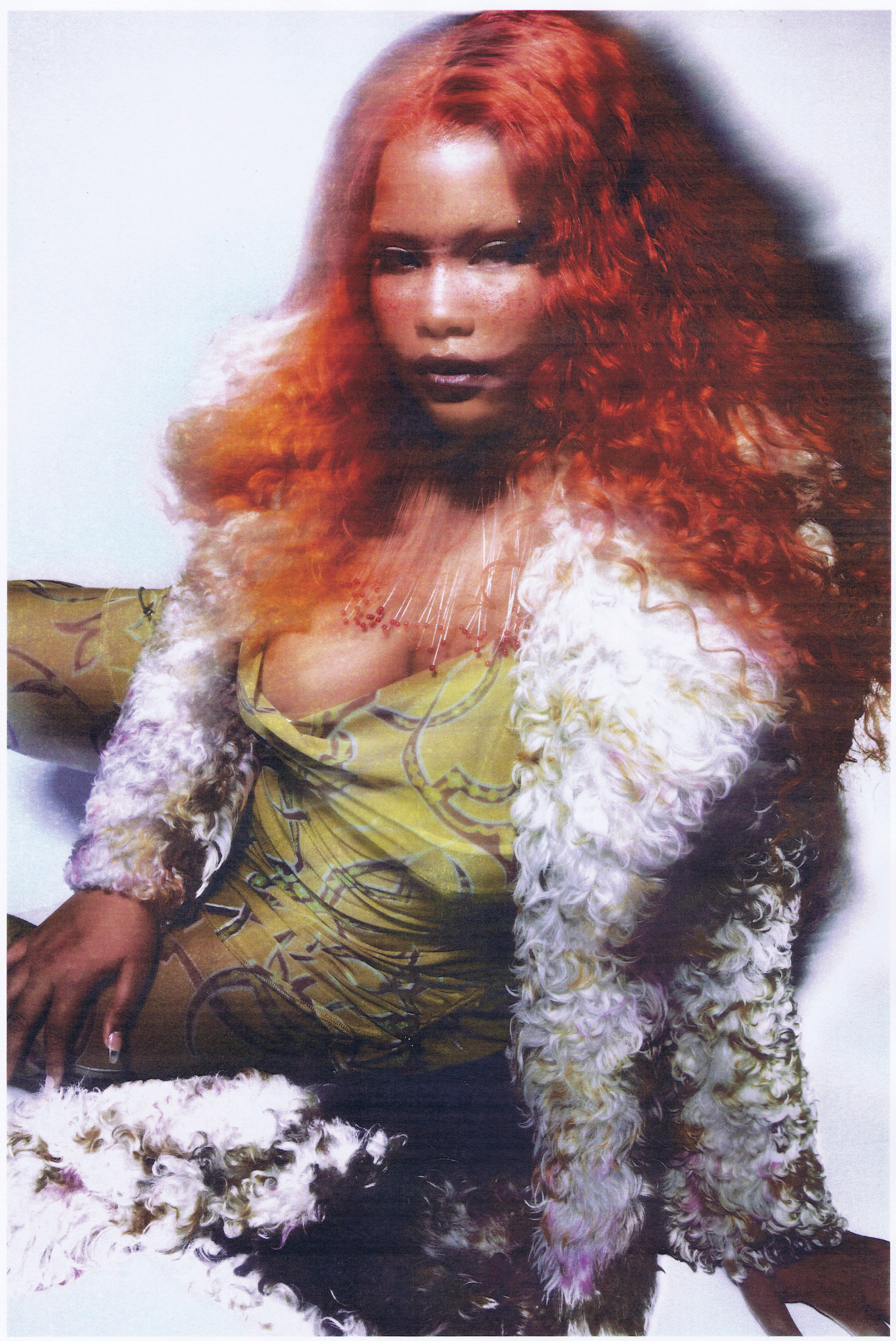
At the end of a year in which the world has reckoned with the insidious undertones of everyday discrimination, Shygirl continues to be subject to the same treatment as her contemporaries. “I’ve noticed that a racist’s favourite ignorant thing to do is to compare you to random famous Black people even when there’s literally zero comparison,” she tweeted in November. “If she’s Black and famous, I’ve been told I look like her,” she wrote, citing Lizzo and Macy Gray as examples. In these contexts, Shygirl’s creation of four characters to accompany and embody ALIAS allows her to dictate the multiplicity of her style on her own terms. “A lot of what I write about is taking ownership of something that’s been forced upon you,” Shygirl told Mixmag last month.
The aesthetic epitome of this is the full video for SLIME. Featuring all four bbz and Shygirl herself, it represents a showcase for the EP’s concept while also asserting its playfulness. The opening is Matrix-like, embracing the feeling of a simulation before each themed world is generated. The bbz enter, perplexed by their rainbow surroundings before Shygirl herself takes over, shifting outfits to blur the lines between herself and the characters: first black leather, then head-to-toe blonde followed by a translucent dress with a lilac, silk-like backdrop, her face speckled with red dots framed by flaming red hair. This is ALIAS at its clearest: the bbz as part-offspring, part-entourage, but the fiercest attitude reserved for the artist herself.
The bbz are a perfect fit for the realities of modern pop, especially during a period of shuttered tour buses and cancelled shows. By looking inwards to project outwards (“I am my own main character, heroine and muse,” Shygirl told Dazed in a recent profile) the ALIAS star is able to tread a line between continuity and invention, giving her fans four times the opportunity to engage with her while amplifying a kind of unapologetic introspection into the music world.
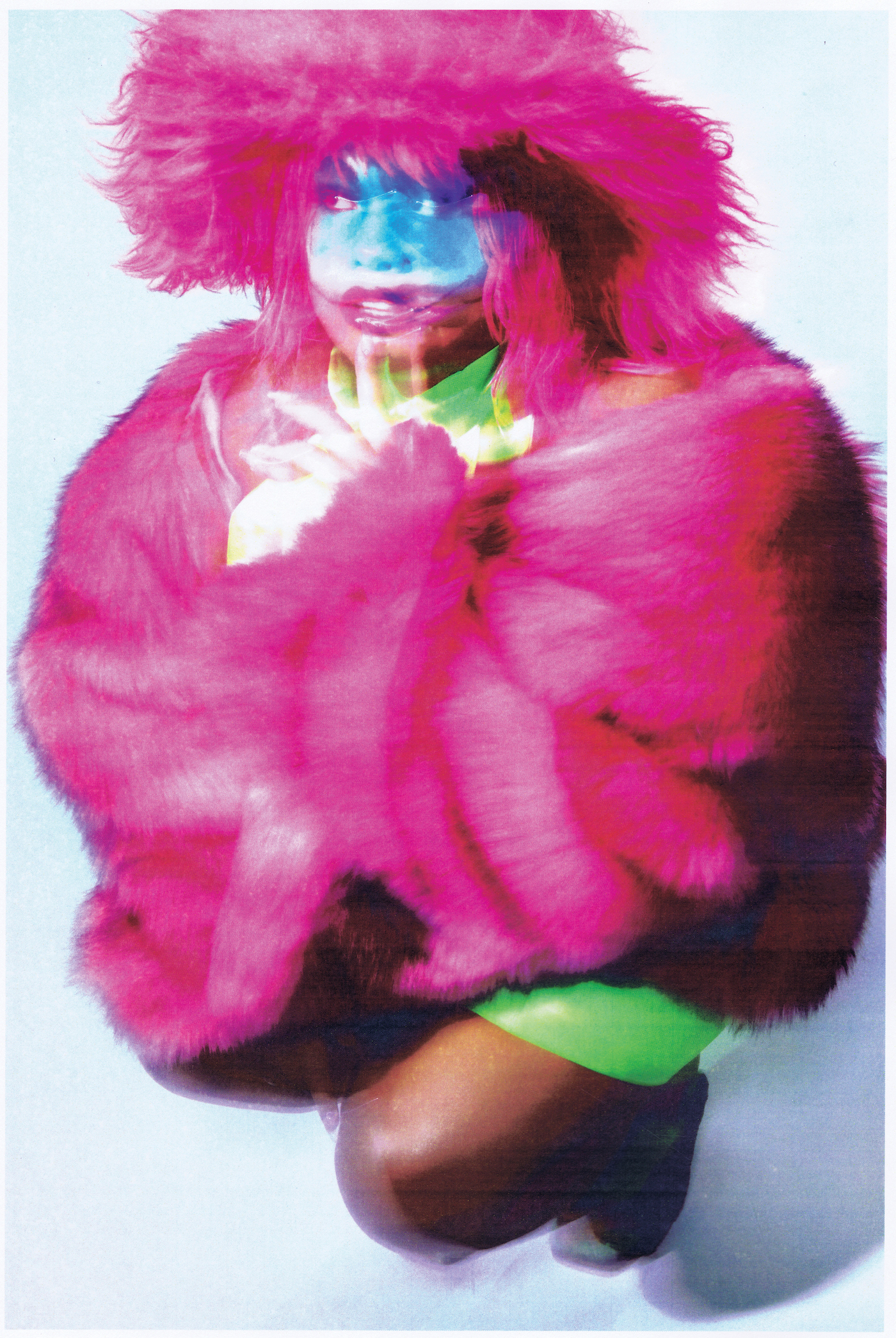
The bbz therefore appeal to an age old trope of celebrity fandom: identification. By learning more about Baddie, Bonk, Bovine and Bae as ALIAS progresses, fans can choose the character who best represents them, or which they like the most on any given day. This plays into a kind of leisured participation that permeates all forms of gaming culture. The artist’s Twitter feed already features a fan recreating Shygirl’s written logo on Animal Crossing. Beyond their contribution to ALIAS’ raw, unabashed sexuality, the bbz signal Shygirl openly endorsing the overlap between not just musical boundaries, but cultural ones too.
